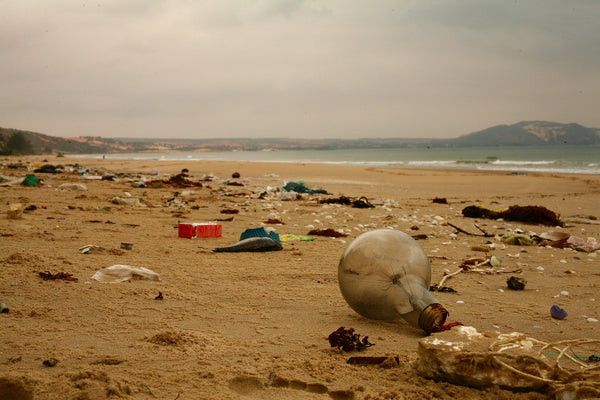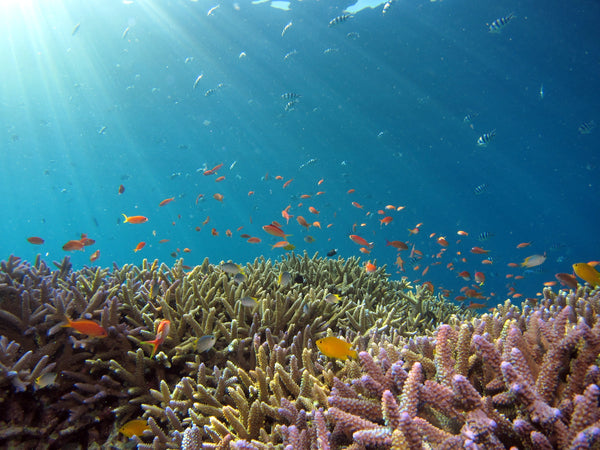“KNOT a DAY” Let’s protect the richness of the ocean (SDGs14)
The Sustainable Development Goals "SDGs" were adopted at the United Nations Summit in September 2015. It is featured in the media every day, and many people are starting to feel familiar with it little by little.
The SDGs have 17 goals and 169 targets to achieve them. This time, since it will be distributed in the middle of summer, we will focus on the goal related to the ocean, ``SDGs 14: Protect the richness of the ocean.'' I would like to think about the problems currently occurring in the ocean and what we can do to address them.
~Contents of this article~
・Contents of SDGs 14 “Let’s protect the richness of the ocean”
・You can do it starting today! Actions to protect the sea
・KAPOK KNOT and SDGs14
·summary
Contents of SDGs 14 “Let’s protect the richness of the ocean”
The theme of SDG14 is "Conserve and sustainably use oceans and marine resources for sustainable development." If you break it down, it can be organized into the following two points.
◯Protect the sea and its resources to create a sustainable society.
◯Use and utilize the sea and its resources in a sustainable manner.
Now, I would like to introduce the issues that need to be solved in order to achieve this goal, and the problems that are currently occurring in the oceans around the world.
■Decrease in marine life

With the global health boom, more people are eating fish, and the world's fish catch has increased rapidly since 1960. Illegal fishing and overfishing have also caused great damage to marine resources, and it is reported that the number of marine creatures has halved between 1970 and 2015.
Many creatures are designated as endangered species, and if things continue like this, there is a possibility that even tuna and eel, which are familiar to Japanese people, will no longer be eaten.
In order to solve this problem, it is necessary to limit the amount of fish caught while also creating new jobs that support the livelihoods of people in developing countries who rely on fishing for a living.
■Plastic garbage

Plastic production has increased approximately 200 times since the 1950s. In particular, the consumption of packaging plastics such as drink and food containers and Styrofoam packaging is increasing, and the amount of plastic waste being thrown away is also increasing.
Approximately 8 million tons of plastic waste flows into the world's oceans every year . It is even said that by 2050, the amount of plastic in the ocean will exceed the amount of fish.
These plastic wastes do not completely decompose naturally. It ends up in the ocean before it decomposes, and remains in nature for hundreds of years. Although it is broken down into small pieces, it takes about 400 years for one plastic bottle to break down into small pieces. Fine plastic pieces smaller than 5 mm are called "microplastics," and they enter the bodies of fish, birds, microorganisms, and other animals, causing great damage.
■Sea water temperature rise

There are various possible causes for the rise in seawater temperatures, but the impact of carbon dioxide is particularly significant. Greenhouse gases such as carbon dioxide increase ocean temperatures and directly impact marine ecosystems.
A particular problem is the impact on calcifying organisms such as corals. In addition to rising seawater temperatures, the oxidation of seawater with carbon dioxide causes corals to no longer function properly in their ability to produce shells and skeletons. If things continue as they are, it is predicted that 90% of the world's coral reefs will be exposed to such threats by 2030, and almost all coral reefs by 2050.
Coral reefs support the life of approximately 90,000 types of sea creatures, so if they become extinct, the food chain will be disrupted, and other creatures besides marine life will be affected as well.
You can do it starting today! Actions to protect the sea
There is something each of us can do to solve the problems occurring at sea.
■Choose “sustainable seafood”

"Sustainable seafood" refers to marine products that are caught or farmed with consideration for marine resources and the environment. Its origin is said to be England. It is said that the sharp decline in the amount of cod used in the national dish, ``fish and chips,'' has heightened awareness of the crisis and spread the idea of ``sustainable seafood.''
Currently, there are two certification marks for sustainable seafood.
・MSC certification: Natural marine products caught in fisheries that are considerate of marine resources and the environment.
・ASC certification: Aquacultured seafood grown with minimal consideration for the environment and society.
These certifications are commonly known as ``marine eco-labels,'' and by choosing seafood products with this label, you can help stop the ``decline of marine life'' and protect ocean resources.
■Reduce plastic waste

The plastic waste that overflows into the ocean is not limited to that left by beachgoers. Garbage that spills out of garbage cans is often blown away by the rain and wind and ends up in the ocean. That's why it's important to think about reducing plastic waste as much as possible.
The following actions are initiatives that can contribute not only to the ocean but to environmental conservation in general. Please try it out starting tomorrow!
・Carry your own bottle instead of buying a plastic bottle
・When going shopping, use your own bag instead of taking a plastic bag
・Use your own chopsticks instead of receiving disposable spoons and forks
*Efforts to reduce carbon dioxide that leads to ocean pollution are also introduced in the following articles.
“KNOT a DAY” Power Shift ~Incorporating renewable energy into daily life~
KAPOK KNOT and SDGs14
I thought about the connection between KAPOK KNOT and SDG 14, "Let's protect the richness of the ocean." We would like to introduce you to the initiatives we are already undertaking as a brand and what we are thinking about for the future.
■Using recycled resources for packaging

At Kapok Knot, we avoid using petroleum-derived materials as much as possible in our product packaging. Furthermore, the boxes used for packaging are made by effectively utilizing the ``cacao bean skin'' produced during chocolate manufacturing. Reusing items that would normally be thrown away as garbage can also help reduce carbon emissions.
■Use as adsorption material for spilled crude oil

Kapok is light and floats on water, so it can be used as an oil adsorbent to absorb sea oil. The heavy oil spill accident off the coast of Mauritius Island in July 2020 caused significant damage to the marine environment. We would like to continue working as KAPOK KNOT so that kapok can be used in these situations.
summary

This year, due to the influence of the coronavirus, many people may not be able to go to the beach even if they want to. However, as I introduced this time, you can practice actions to protect the ocean's richness in your daily life, even if you don't actually go to the ocean.
So that we can continue to see the beautiful sea again from next year onwards. Why not start with something you can do near you?
*Currently, KAPOK KNOT is holding “Sustainer Quiz -Marine Environment Edition-”! There are also quizzes about brands that protect the marine environment that are not introduced in this article, so be sure to give them a try!
Sustainer Quiz -Marine Environment Edition

Leave a comment
This site is protected by hCaptcha and the hCaptcha Privacy Policy and Terms of Service apply.